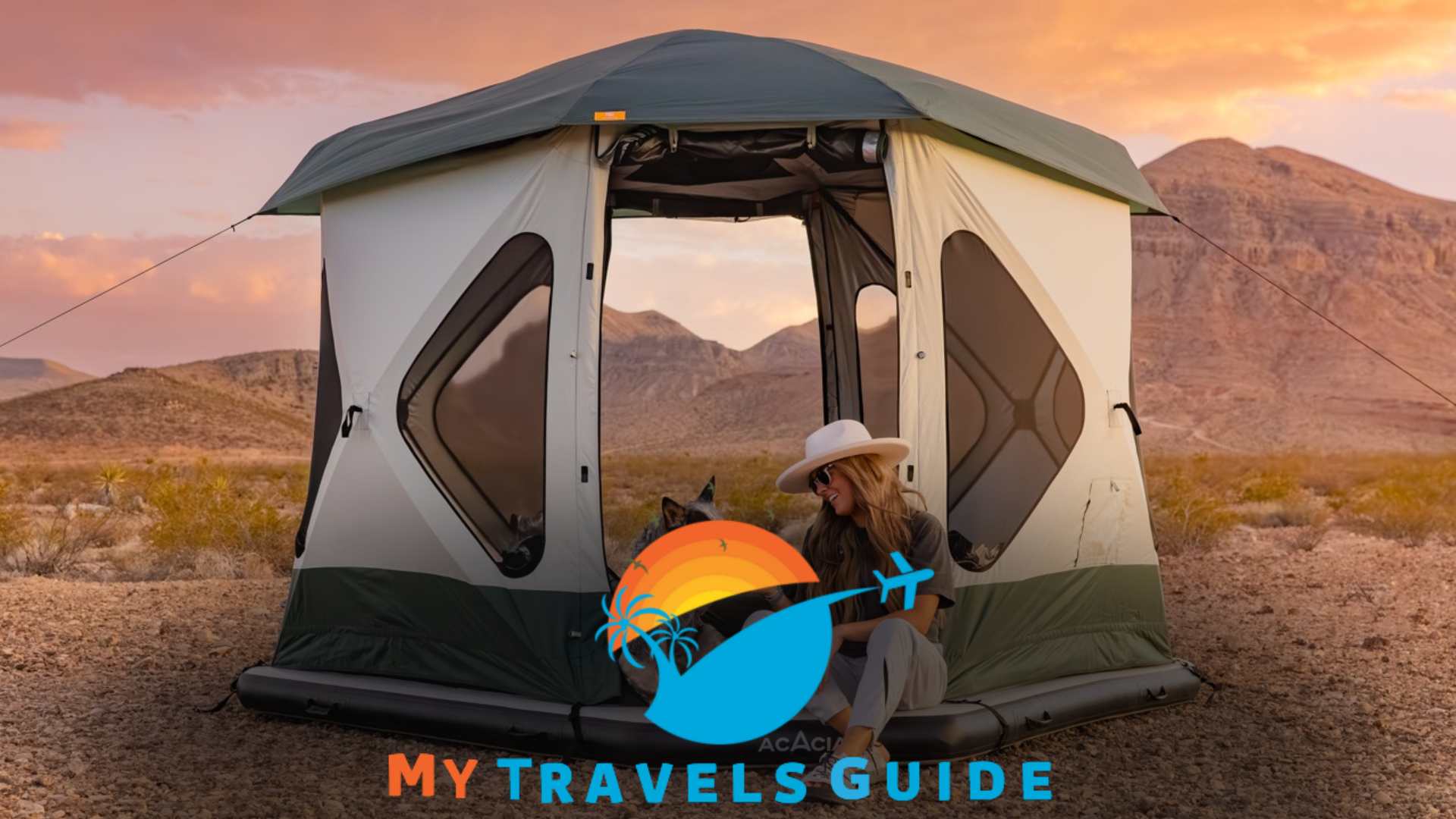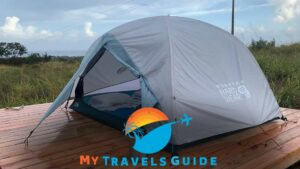In this article:
Outdoor tents are commonly used for camping, hiking, and other outdoor activities, providing shelter and protection from the elements. However, there may be occasions when you wonder whether these versatile structures can be used indoors.
In this article, we will explore the possibilities and considerations of using outdoor tents indoors, examining the differences between outdoor and indoor tents, safety concerns, potential uses, and necessary precautions.
Understanding Outdoor Tents
Purpose and Design
Outdoor tents are primarily designed for outdoor use, catering to the needs of campers, hikers, and adventurers. They are crafted to withstand wind, rain, and other weather elements, offering protection and comfort in rugged environments.
Outdoor tents come in various shapes and sizes, accommodating different purposes and group sizes.
Features and Materials
Outdoor tents often feature multiple layers to enhance weather resistance. They may have rainfly covers, vestibules, and mesh panels for ventilation.
The materials used in their construction are chosen for their durability and resistance to outdoor elements. While these features are well-suited for outdoor use, they may pose challenges when utilizing outdoor tents indoors.
If you’re considering transforming your living space, you might wonder about the practicality of using an indoor tent for adults. These versatile shelters can provide a unique and cozy retreat within your home.
Differences between Outdoor and Indoor Tents
When considering the use of outdoor tents indoors, it’s crucial to understand the key differences between these two types of tents.
Ventilation and Air Circulation
Outdoor tents are designed to allow for proper airflow and ventilation in outdoor environments. They often feature mesh panels, windows, and vents to promote air circulation, prevent condensation, and reduce the build-up of odors.
In contrast, indoor tents or structures typically have better insulation and controlled ventilation systems to maintain a comfortable indoor environment.
Insulation and Weather Resistance
Outdoor tents are constructed with the primary goal of providing protection against external weather conditions. They are designed to withstand wind, rain, and even snow.
In comparison, indoor tents or structures often have better insulation and climate control features, ensuring a more stable and comfortable environment.
Size and Space Considerations
Outdoor tents are commonly designed to accommodate multiple occupants and provide ample space for sleeping, storage, and shelter. They come in various sizes, from small two-person tents to large family-sized ones.
However, when using outdoor tents indoors, it’s essential to consider the available space and ensure that the tent can fit comfortably without obstructing walkways or creating cramped conditions.
Safety Concerns of Using Outdoor Tents Indoors
While the idea of using an outdoor tent indoors may seem appealing in certain situations, it’s crucial to be aware of the potential safety concerns associated with this practice.
Fire Hazards
Outdoor tents are not designed with fire safety as a primary consideration. The fabrics used in their construction may be highly flammable and can catch fire easily.
Additionally, the proximity of the tent walls to heating sources or open flames indoors can increase the risk of accidental fires.
It’s important to exercise extreme caution and keep all sources of heat and flames away from the tent.
Carbon Monoxide Poisoning
Outdoor tents typically have more open ventilation to allow for airflow, which helps dissipate gases like carbon monoxide that may be present in outdoor environments.
When using a tent indoors, the risk of carbon monoxide buildup increases. It’s crucial to ensure proper ventilation and avoid using heating sources that produce carbon monoxide, such as gas-powered stoves or heaters, inside the tent.
Structural Stability
Outdoor tents are designed to withstand outdoor elements such as wind and rain, but they may not be structurally suitable for indoor use. Indoor structures often have more stable foundations and support systems, while outdoor tents rely on stakes and guy lines to secure them.
Using an outdoor tent indoors may pose a risk of instability, especially during heavy winds or structural stress.
Families with unique requirements often explore the benefits of special needs strollers. These innovative stroller designs cater to the specific needs of individuals with diverse abilities, offering enhanced comfort and convenience.
Potential Uses of Outdoor Tents Indoors
While using outdoor tents indoors may come with safety considerations, there are situations where it can be a viable option with proper precautions.
Temporary Shelter during Renovations
If you’re undergoing home renovations and need temporary shelter or a protected space within your home, setting up an outdoor tent indoors can provide a practical solution.
It can serve as a temporary living area or storage space while ensuring that you have a designated area shielded from construction debris and dust.
Indoor Camping or Sleepovers
Indoor camping or sleepovers can be a fun and adventurous activity, especially for children. Setting up an outdoor tent indoors can create a unique camping experience within the comfort of your home.
It allows for a sense of exploration and excitement while maintaining the convenience of indoor amenities.
Play Areas for Children
Setting up an outdoor tent indoors can create an imaginative play area for children. It can serve as a cozy and private space for them to engage in pretend play, read books, or have their little adventures.
The tent provides a designated area where children can exercise their creativity and have their own little hideout.
Precautions for Using Outdoor Tents Indoors
If you decide to use an outdoor tent indoors, it’s important to take necessary precautions to ensure safety and a comfortable experience.
Proper Ventilation and Airflow
To mitigate the risk of carbon monoxide buildup and ensure proper air circulation, it’s crucial to have adequate ventilation when using an outdoor tent indoors.
Keep windows or doors open to allow fresh air to enter and ensure that the tent has sufficient openings for air to flow in and out.
Fire Safety Measures
To minimize the risk of fire hazards, it’s essential to keep all sources of heat and open flames away from the tent. Avoid using candles, portable stoves, or heaters inside the tent.
Install smoke detectors and have a fire extinguisher nearby as an added safety measure.
Regular Maintenance and Inspection
Before using an outdoor tent indoors, inspect it thoroughly for any damages or signs of wear and tear. Check the tent’s structural integrity, including the poles, seams, and zippers.
Repair any damages or replace parts as needed. Regularly clean and maintain the tent to ensure its longevity and functionality.
When planning your next trip, it’s crucial to be well-informed, but misinformation can be confusing. Clear up any doubts by learning what is not true about the travel policy, ensuring a smooth and stress-free travel experience.
Conclusion
While outdoor tents are primarily designed for outdoor use, they can be utilized indoors for specific purposes with caution. However, it’s important to understand the differences between outdoor and indoor tents, as well as the associated safety concerns.
Proper ventilation, fire safety measures, and regular maintenance are essential when using an outdoor tent indoors.
By considering these factors and taking necessary precautions, you can make informed decisions about utilizing outdoor tents for indoor purposes.
FAQ
Can I use an outdoor tent indoors for an extended period?
It’s not recommended to use an outdoor tent indoors for an extended period. Outdoor tents are designed for temporary use and may not provide the same level of comfort and stability as indoor structures.
Are there any health risks associated with using outdoor tents indoors?
Using outdoor tents indoors can pose health risks if proper ventilation is not ensured. Carbon monoxide buildup and poor air circulation are potential concerns. It’s crucial to maintain adequate airflow and avoid using heating sources that produce carbon monoxide inside the tent.
How can I ensure proper ventilation when using an outdoor tent indoors?
To ensure proper ventilation, keep windows or doors open to allow fresh air to enter. Additionally, make sure the tent has sufficient openings for air circulation. Avoid sealing the tent completely, as it can lead to poor airflow and condensation buildup.
Do I need to treat the fabric of an outdoor tent before using it indoors?
Outdoor tents are typically treated with waterproofing and UV protection. However, treating the fabric with flame retardant or other suitable products can be beneficial when using it indoors to enhance fire safety measures.
Can I use an outdoor tent indoors during the winter?
Using an outdoor tent indoors during the winter can pose additional challenges. Proper insulation and heating are crucial to ensure a comfortable and safe environment. It’s important to consider the limitations of the tent’s design and materials in providing adequate warmth in colder temperatures.










